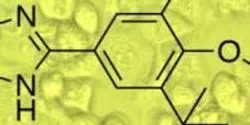Health Science

The new Human Neuroscience Institute in Cornell University’s College of Human Ecology aims to advance research on the neural basis of human behavior.

Scientists Invent Breakthrough Approach to Quickly Identify New Drug Candidates from Genome Sequence
As proof-of-principle, the team designs potent anti-cancer compound.

Dartmouth researchers have developed a protocol that permits cells harvested from melanoma tumors in mice to grow readily in cell culture. Their findings were published in an article, Multiple murine BRafV600E melanoma cell lines with sensitivity to PLX4032, in the January 25, 2014 issue of Pigment Cell & Melanoma Research.

University of Adelaide physics researchers have developed a new type of laser that will enable exciting new advances in areas as diverse as breath analysis for disease diagnosis and remote sensing of critical greenhouse gases.

Using a smartphone to cram in more work at night results in less work the next day, indicates new research co-authored by a Michigan State University business scholar.

Research breakthrough reveals natural mechanism in brain cells that protects against “molecular piracy” of deadly neurological diseases

Researchers at the University of Delaware have developed a “smart” hydrogel that can deliver medicine on demand, in response to mechanical force.

With the flu and cold season in full swing, kinesiology professor Karin Richards, at University of the Sciences in Philadelphia, said many people tend to ignore their symptoms to keep on track with their fitness resolutions for the New Year. In fact, Richards said working out while under the weather can actually do more harm than good for individuals looking to shed a few pounds and adopt healthier lifestyles.

Vaccines combat diseases and protect populations from outbreaks, but the life-saving technology leaves room for improvement. Vaccines usually are made en masse in centralized locations far removed from where they will be used. They are expensive to ship and keep refrigerated and they tend to have short shelf lives.

By the time they’re two, most children have had respiratory syncytial virus (RSV) and suffered symptoms no worse than a bad cold. But for some children, especially premature babies and those with underlying health conditions, RSV can lead to pneumonia and bronchitis – which can require hospitalization and have long-term consequences.











